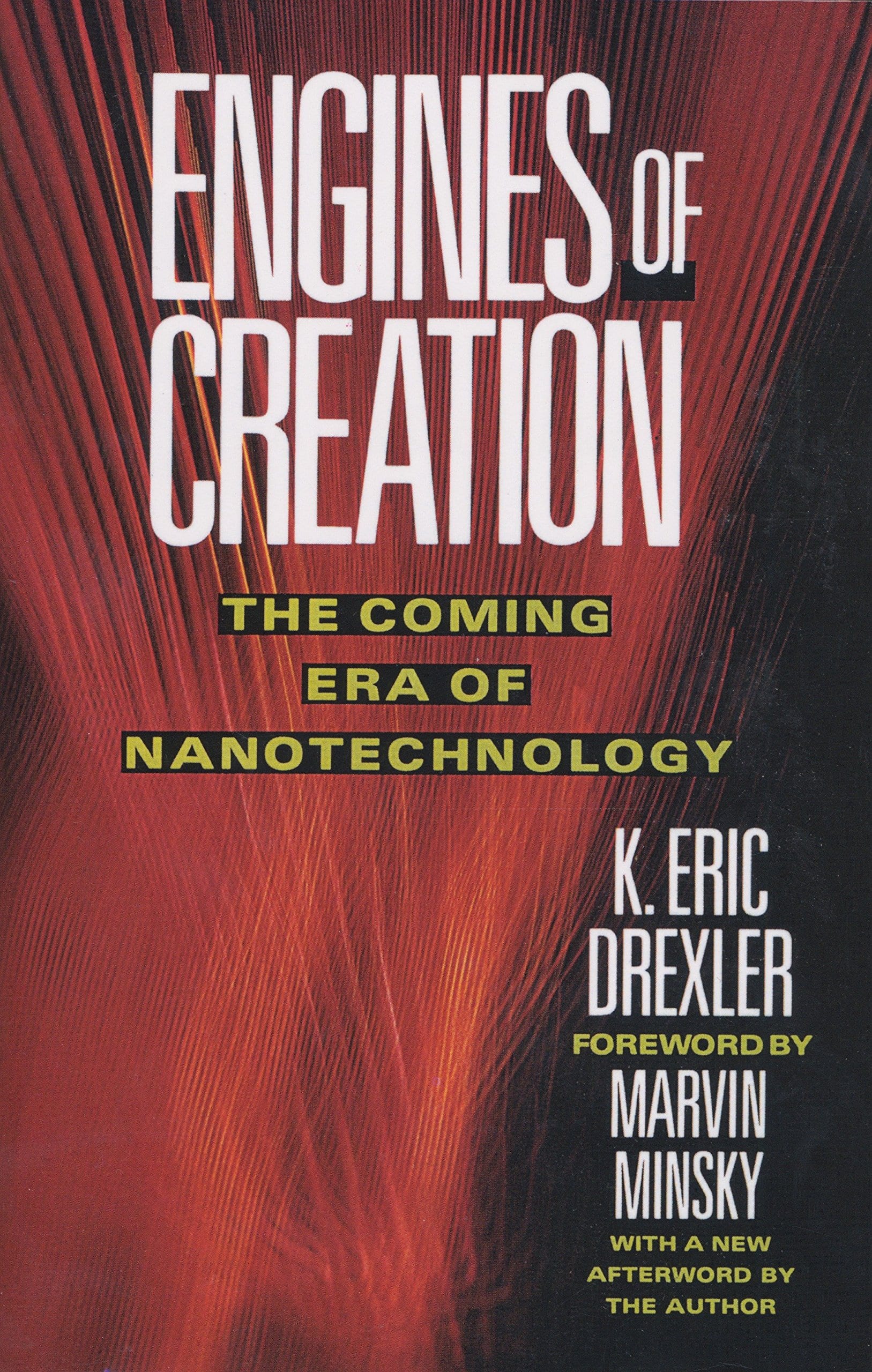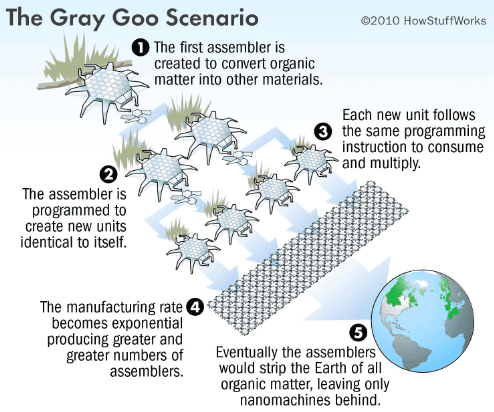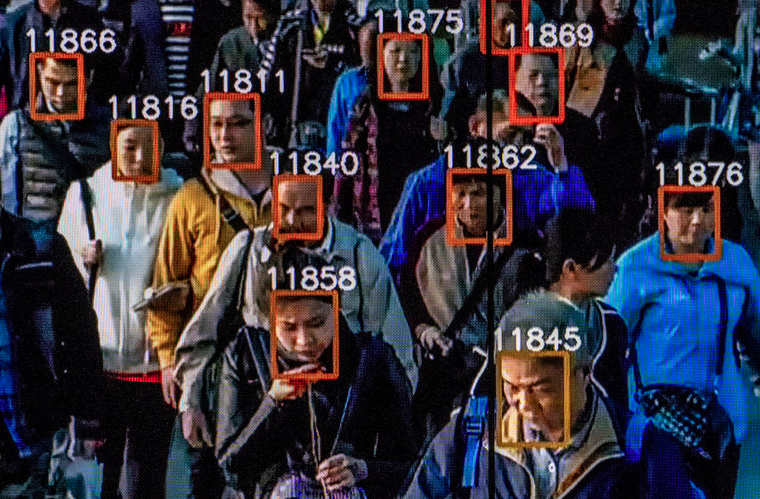Author Eric Drexler Predicts Current Virus Through Nanotechnology Replication
Well… we made it. 2020 is in the past.
There was a pandemic, the virus. The one that enabled the spread. The virus enables the system. The cops. A participant is an enabler.
It is convenient to smirk and disengage, checking out into mind-numbing spaces of withdrawal. Let me click into a new void of internet exploration. Let me drift away into a new season. Three days become three months. Do I still pay rent?
The momentum of unbothered existence disturbs. What’s going on renders us helpless, hopeless, trapped on the narrow shoulder of a congested freeway. Grandma’s dead, my neighbor’s shot, and the traffic duplicates into a constant blur. I’m not going anywhere.
The grime on my face is too thick to wipe off. Derailed replication is the theme of the moment. Viruses self-replicate. Their minuscule, barely organic bodies, shaken into existence inside a box of human flesh. Assembling with no reason other than the ability of proliferation.
Engines of Creation and Visions of a Self Replicating Future
Cells replicate. Their machines copy their DNA, which directs their ribosomal machinery to build other machines from simpler molecules
Machines, given the right instructions, also replicate. Their allegorical arms, whirring and rotating. Buzzing gears and components aligned, the process starts anew.
In his 1986 book Engines of Creation, author Eric Drexler imagines a future of molecular assemblers. A systems of atoms by atom manufacturing chains. The machines initiate at a nanoscale setting. They establish circumstances for an atomic bond, instigating a loop of self-driven molecular adhesion. Before long, the machine is assembling the billionth copy of itself. The reaped merits of exponential growth.
Drexler envisions such machines are not categorized by organic or non-organic delineations. Their functions not only mimic but fully reenact the processes that birth life.
The molecular machines exit the hands of the laboratory worker, no longer constricted to the abilities of a chemist. The human sets the parameters, inserts the catalyst and allows organic processes to do the rest.
A flexible, programmable protein machine will grasp a large molecule (the workpiece) while bringing a small molecule up against it in just the right place. Like an enzyme, it will then bond the molecules together. By bonding molecule after molecule to the workpiece, the machine will assemble a larger and larger structure while keeping complete control of how its atoms are arranged.
Comes off saccharinely idealist? Let’s clog those proteins into our pores and ‘repair’ ourselves. Chain those bonds and manufacture a perfect human, no, ten billion perfect humans.
Those plotting chemists, they’re in with the authoritarians on natural selection.
Nanotech and the Runaway Grey Goo of 2020
The terror of uncontrolled duplication; the pandemic. Runaway nano-tech; Drexler calls it ‘grey goo’. Those little machines we set into motion will keep moving until nothing is left. Everything turns to dust.
Since the publication of Engines of Creation, Drexler has revoked his ominous forecast of runaway tech bugs. Obviously to us, having lived through 2020, we’re not making armies of nanotech robots anytime soon.
Progression curved down a different trajectory than 1986 could have envisioned. 1984 was closer to the truth.
Unlike the nanobot blizzards, Drexler forecasted this whole maelstrom.
States could become more like organisms by dominating their parts more completely. Using replicating assemblers, states could fill the human environment with miniature surveillance devices. Using an abundance of speech-understanding AI systems, they could listen to everyone without employing half the population as listeners.
Turns out computing allowed for eavesdropping without the need for assemblers. Those political ribosomes which chained together microphones? They emerged in governmental organizations long before we feared a viral infestation of any kind. We’ve watched out for those dogs with rabid eyes for decades. The risk of infection is greater than expected. The paths of transmission is too many.
Drexler’s right. We didn’t need the bots due to their needless complexity. Why initiate control with something so molecular, when you can obstruct from the top-down? Freedom, liberty, autonomy are utopian ideals. Technological progress, upon a reached threshold are also utopian.
We dreamt of the internet as becoming a new social escape, a Cyber-utopianism. Pristine, hyper-perfected dreams of assemblers beckoning a liberated environment. Devoid of bloated corporations, clunky bureaucracies and through his words ‘stinking, clanking machines’.
Yeah, right. Jeff Bezos cackles. Huxley raises his eyebrow at our Brave New World.
Despite the broad appeal of an open future, some people will oppose it. The power-hungry, the intolerant idealists, and a handful of sheer people-haters will find the prospect of freedom and diversity repugnant. The question is, will they shape public policy?
Drexler doesn’t exclusively root himself in rosy-eyed romanticism. The imminence of oppression persists, no matter the potency of futuristic idealism. In 1986, that facade was imposed by the Soviets, the arms race and a teetering balance of world power.
Evil, Incompetence and Sloth in a Modern American Democracy
Thirty four years later, we’re in a predicament. Political movements swelled, subsided and swelled again to roaring waves, frothy, foaming, seething with distrust. Uh, will it collapse? “Out-of-control”. Duplicated, replicated, infected into a political and medical climate that’s painful to see. Dangerous to exist in. Drexler delineates the three human characteristics that lead to such grounds.
Evil: Those in power are fueled by immortality, abuse and deception. Helplessness.
Incompetence: We, as a unit of policy constructors, government participants, decision-makers, are plainly just-dumb. Unknowingly, the wrong decisions were made.
Sloth: Laziness, and apathy. Nothing prevented due to no action taken at all.
While seemingly trivial, and never separable in their impact, each trait shifts with prominence. Drexler theorizes that sloth is the largest enabler in the democratic system. We lie too shielded from the facts, misinformed, or more likely, not caring to become informed at all. The responsibility of rationality, care-taking, and order is beset to a select, but vocal few.
Those activist figures pushing progress in the right direction? It’s in their hands and for decades they’ve been doing it right.
In the contemporary moment, the blame can’t be as clearly placed. Which streams led to this runaway moment? What actions, inactions and misfortunes created the current toxic state? The danger, it strengthens with the imperceptible.
No organism can afford to be conscious of matters with which it could deal at unconscious levels.
Government, global systems and human health. The threat of runaway replication initiates below the surface. The asymptomatic infects.
When did it all start?




